Merchant App
An onboarding experience and management application for retailers and eCommerce
Background 📋
I was Designer #1 when I joined Chargebacks911 and it seemed as if design and product requirements were driven only by the business and client needs. Years of this process resulted in a broken user experience. After jumping into this process head first, I realized we needed to build a UX foundation that was rooted in user research, collaboration, and iterative prototyping.
In order to understand the purpose of each of our solutions, I had to understand our internal methods, as well as the overall payments process - specifically credit card disputes. I jumped into a world rife with corporate acronyms, business rules, and convoluted logic.
Many retailers simply write-off falsely-protested charges as a cost of doing business. Even if they do try and show evidence, they may still find themselves asking:
- Why is the chargeback process so complicated?
- How can I automate these repetitive tasks?
- How can I manage the disputes my financial team is handling?
What is a chargeback? 💳
It's difficult to explain how the entire process works, and if I tried to explain the entire thing on here, it would probably bore you to death - but when customers file a chargeback with their card issuer, this means that they are disputing a charge and request the card issuer for a refund.
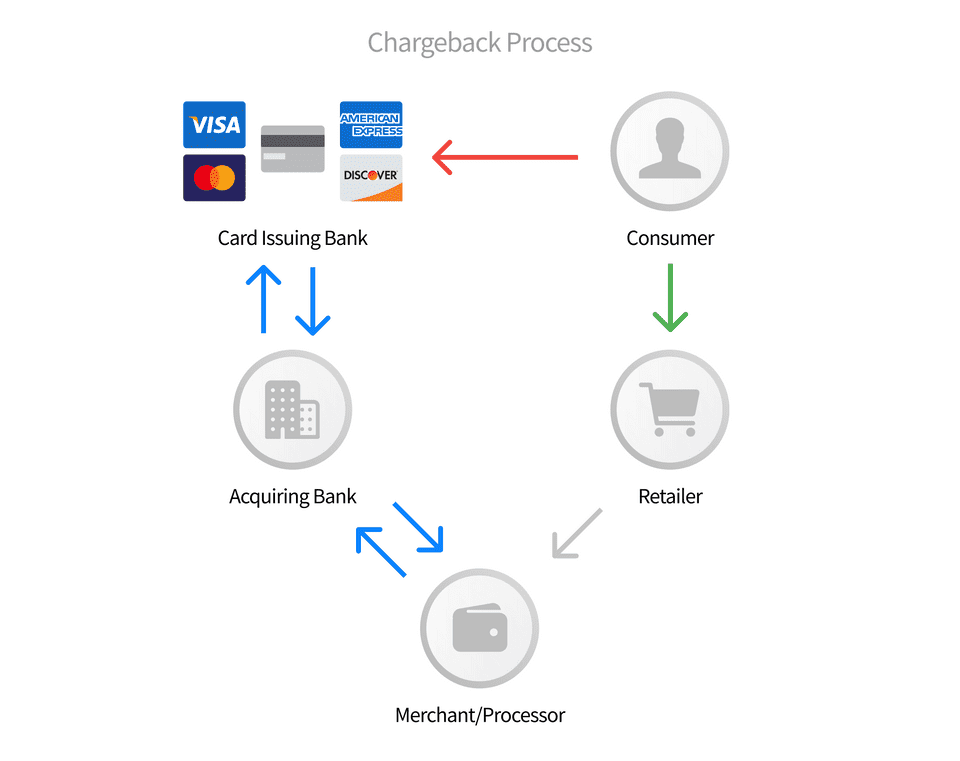
A chargeback is a transaction that a card issuer returns to an acquirer as a financial liability and which, in turn, an acquirer may return to the merchant. There are three common reasons for chargeback including fraud, processing errors, other disputes (e.g. customer disputes). The card schemes define the chargeback process, rules and regulations.
Goals 🎯
Our goal was to create an application that would give them the ability to make that process easier and reduce a client's time spent managing their chargebacks. By using the client's aggregated data, we can build cases using retailer and transaction information.
Using a lightweight, step-by-step application, clients could then choose from 1 of 3 service levels, the most in-depth of which would take all of the leg work away for them and automate the management process.
Chargeback cases cost retailers and merchants millions of dollars in time. How can we give merchants the ability to efficiently manage their cases and reduce operational overhead.
Onboarding 🏃♀️
One of the largest areas creating bottlenecks in our internal process was the gathering of client data and creating an account on behalf of the client. Our teams would go through rounds of back and forth with clients asking for third-party login credentials, retailer information, types of products sold, etc.
We simply needed to rethink this entire process.
After seeing our support teams' experience in manually inputting complex client information for setup, we realized we can gather more accurate data more easily by letting the client onboard themselves - thus came the onboarding wizard. We needed to collect pieces of data from the client, which included:
- Types of product(s) sold
- Locations of operation
- Banking credentials
- Type of data collected
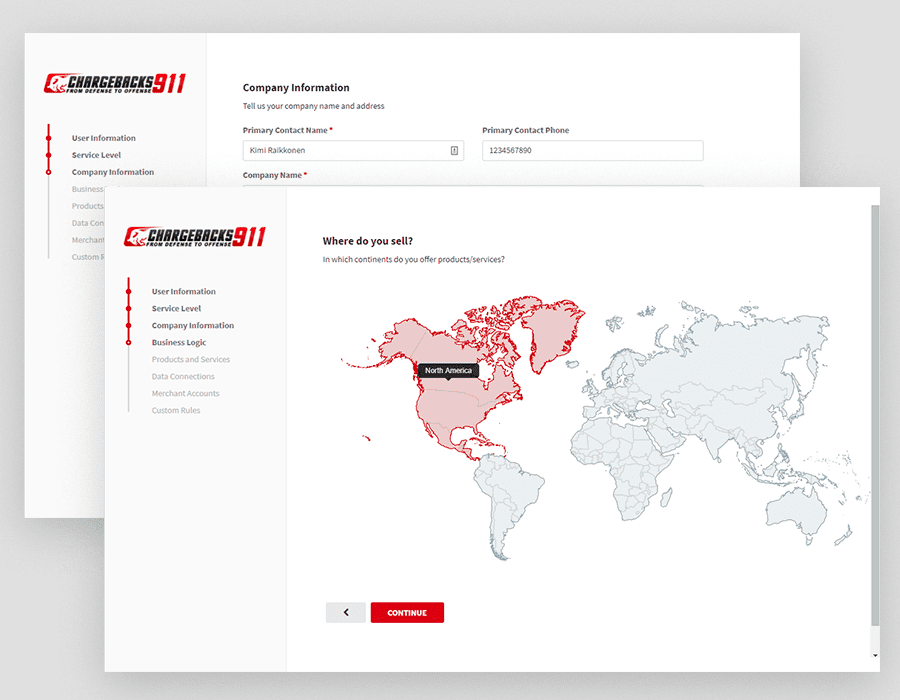
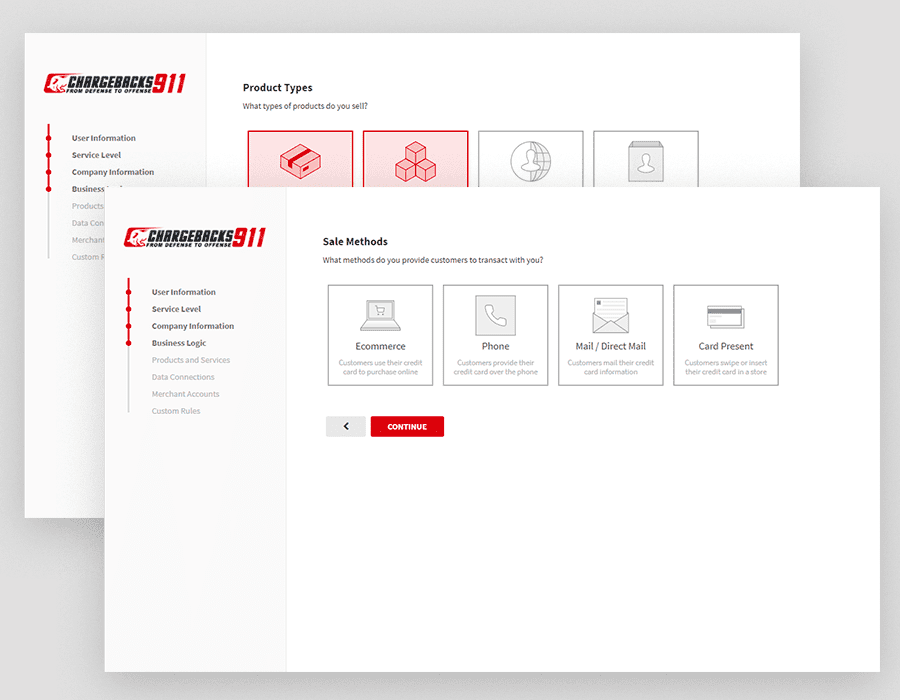
In order to build the most beneficial cases for disputes, we needed to connect to the client's transaction resources (eg. CRM, processor, bank, etc.) as well as intelligently categorize the products they sold.
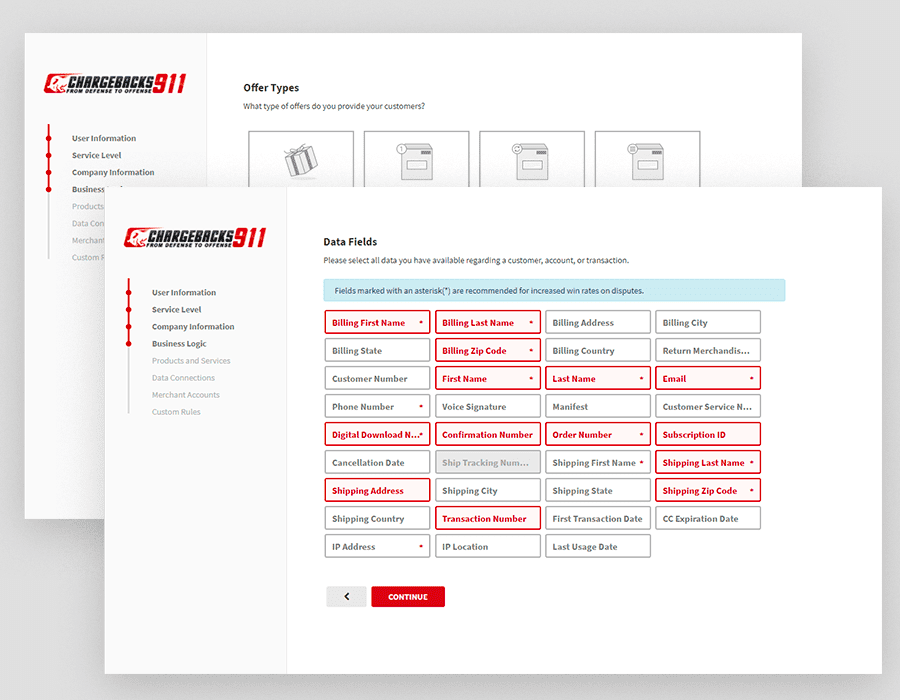
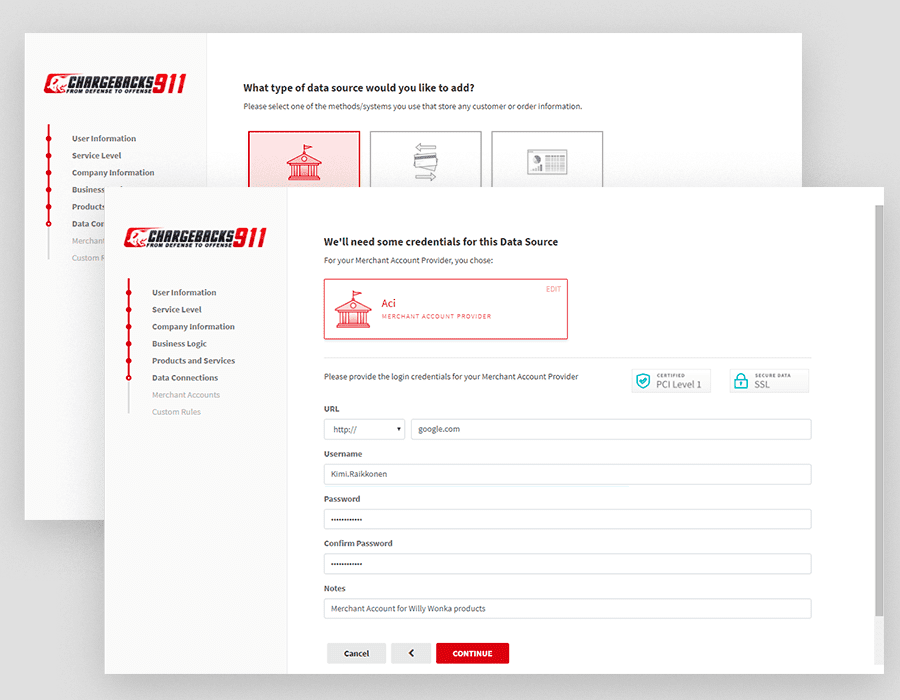
Efficient sorting and filtering 🗃
Many clients face a tsunami of transactions - so we began conducting user research and planning what we could deliver in the necessary timeline. Based on our findings, we architected a rule engine that could filter, sort, and flag through transactions to save time spent on manually searching.
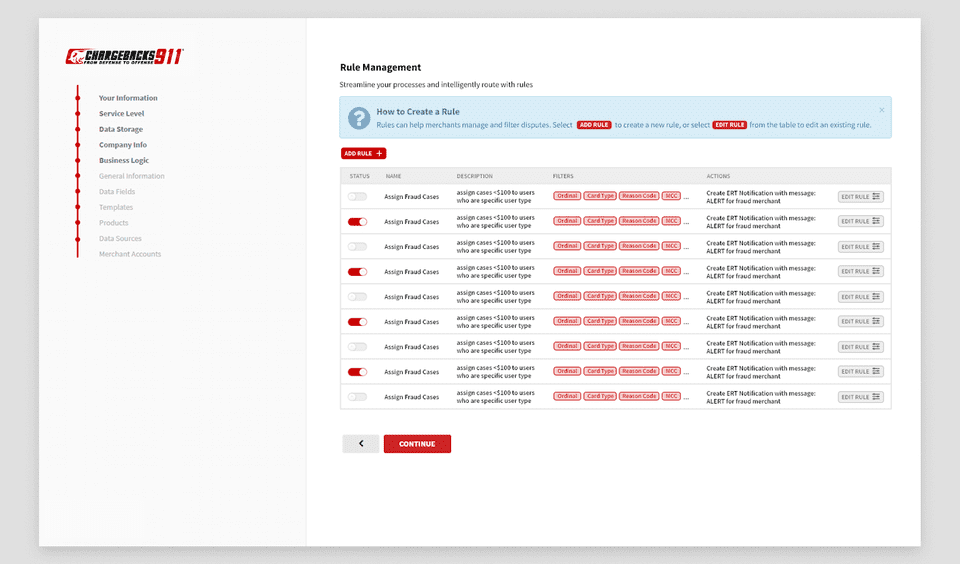
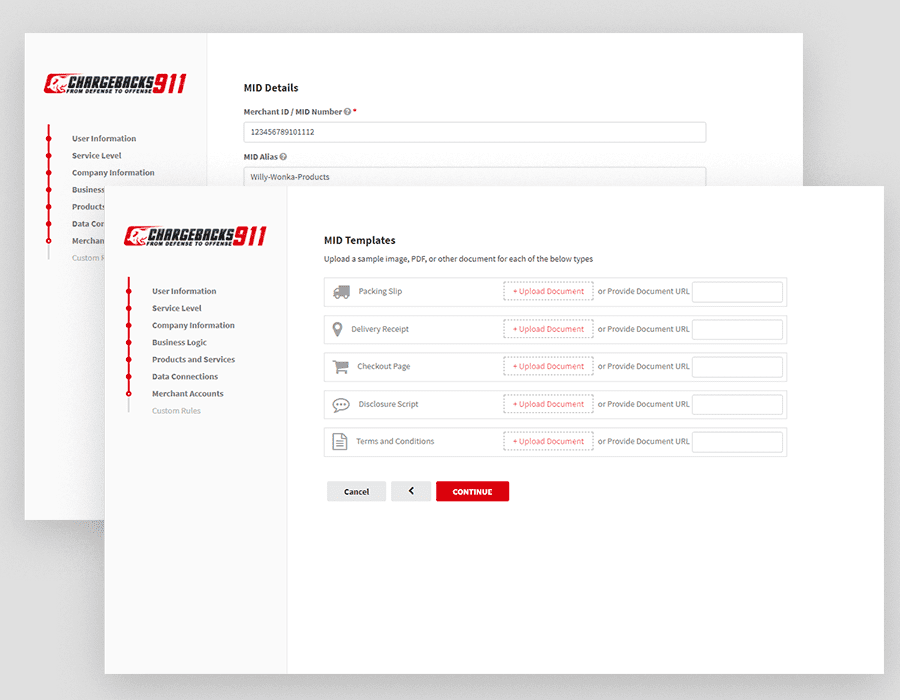
Using visuals 🎨
As part of the onboarding wizard, I created visual assets and a lightweight icon set to help illustrate selections and actions. I also included assets to help convey empty states, success states, product tiers, etc. Since we built the onboarding wizard to be white-labeled and themed for third-party partners, we made sure the visuals could be themed by utilizing the partner's brand palette.
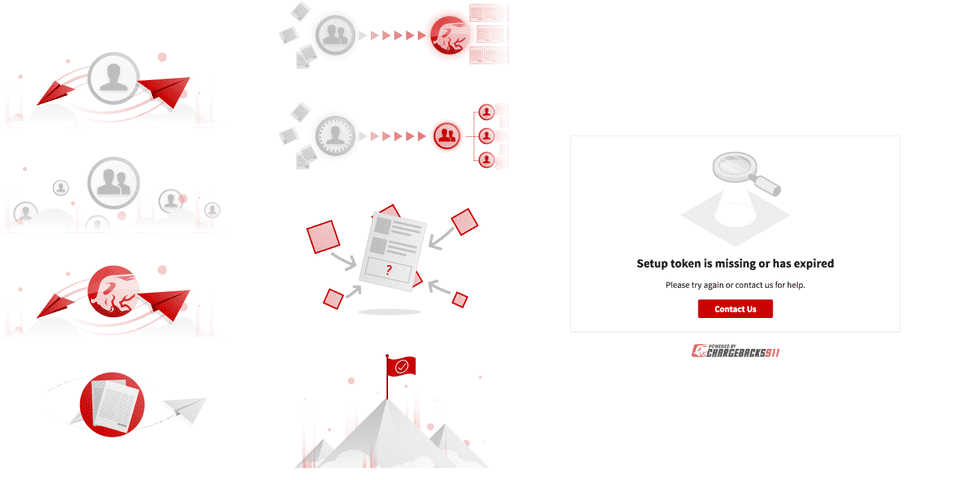
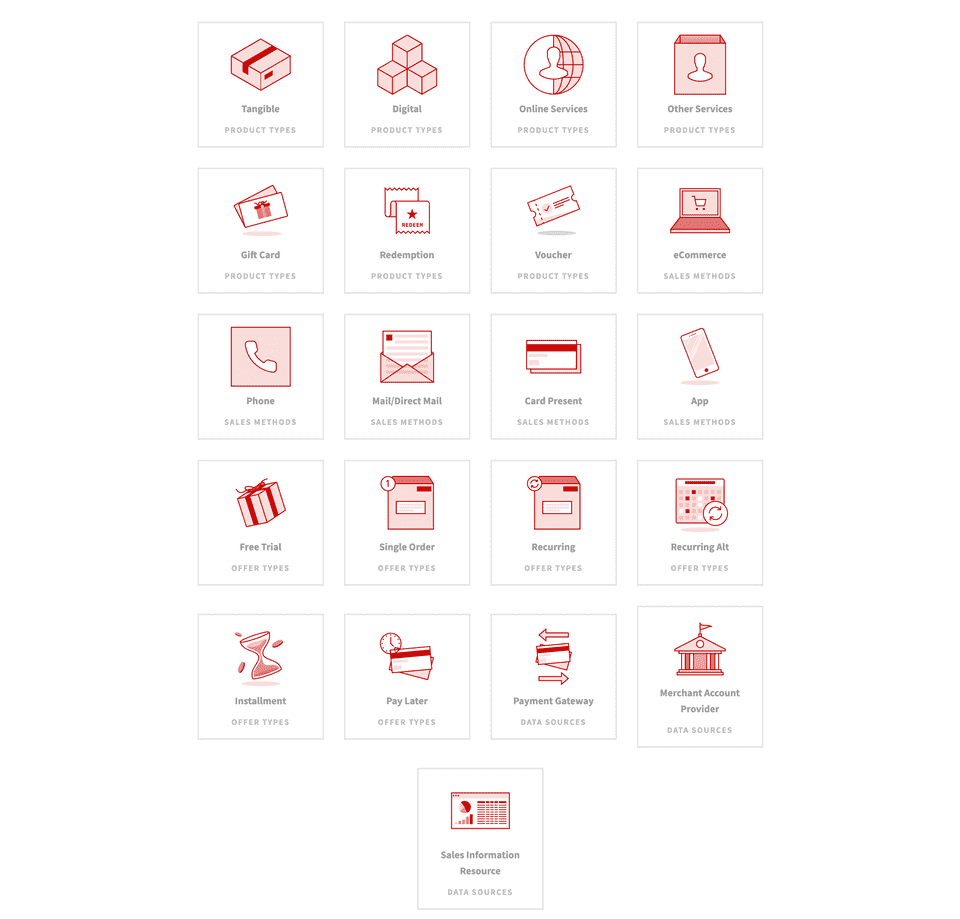
Email Notifications 📨
We also needed notifications for a plethora of use cases:
By using Ted Goas' Cerberus, we made sure all of our email notifications would work on every type of email client (Gmail, Outlook, Mail app, etc.).
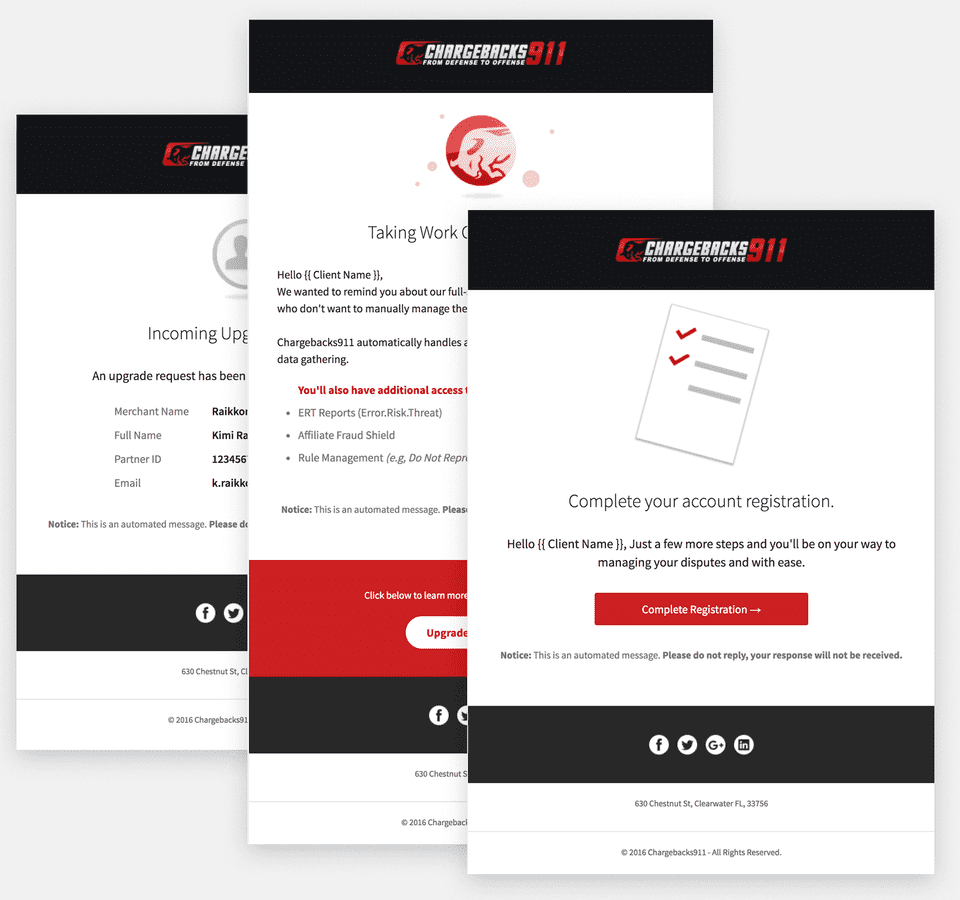
Merchant Portal 👩💻
After creating an account through the onboarding wizard, clients can begin managing their chargebacks and uploading their documents through the merchant portal. The merchant portal also gives users the ability to manage mutliple users, case reporting analytics, and fraudulent transaction alerts.
Speaking with the support teams, we identified questions that often came up for new and old users, isolating pain points and assembling a timeline for what users experience as they progress through the app.
- Why were users leaving?
- What elements of the interface were confusing or unclear?
- Were there any patterns that seemed too complex for the already complex process of payments?
User Journeys and Research 📚
After creating an account through the onboarding wizard, clients can begin managing their chargebacks and uploading their documents through the merchant portal. The merchant portal also gives users the ability to manage mutliple users, case reporting analytics, and fraudulent transaction alerts.
Speaking with the support teams, we identified questions that often came up for new and old users, isolating pain points and assembling a timeline for what users experience as they progress through the app.
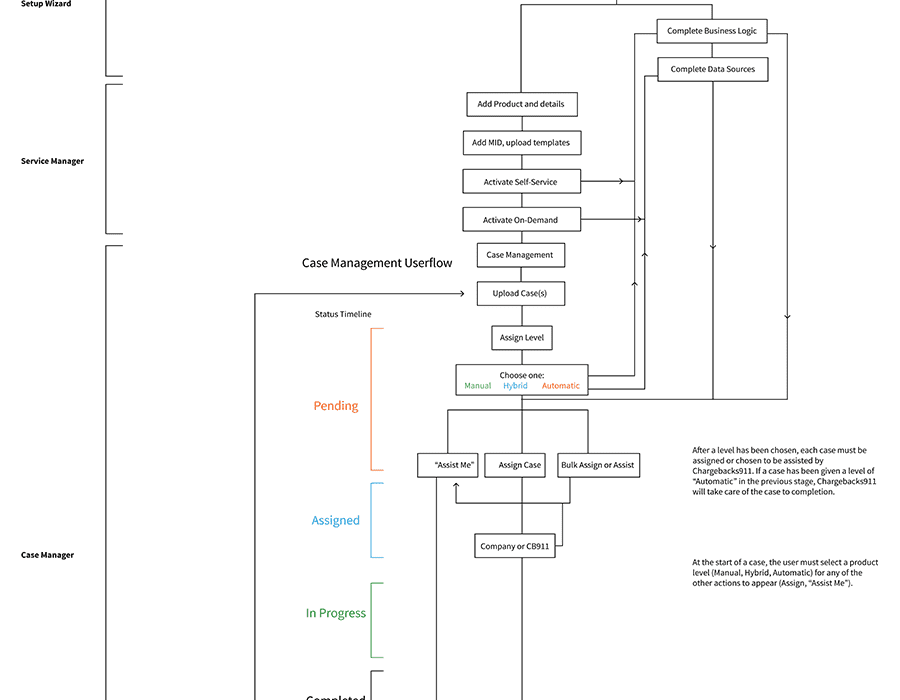
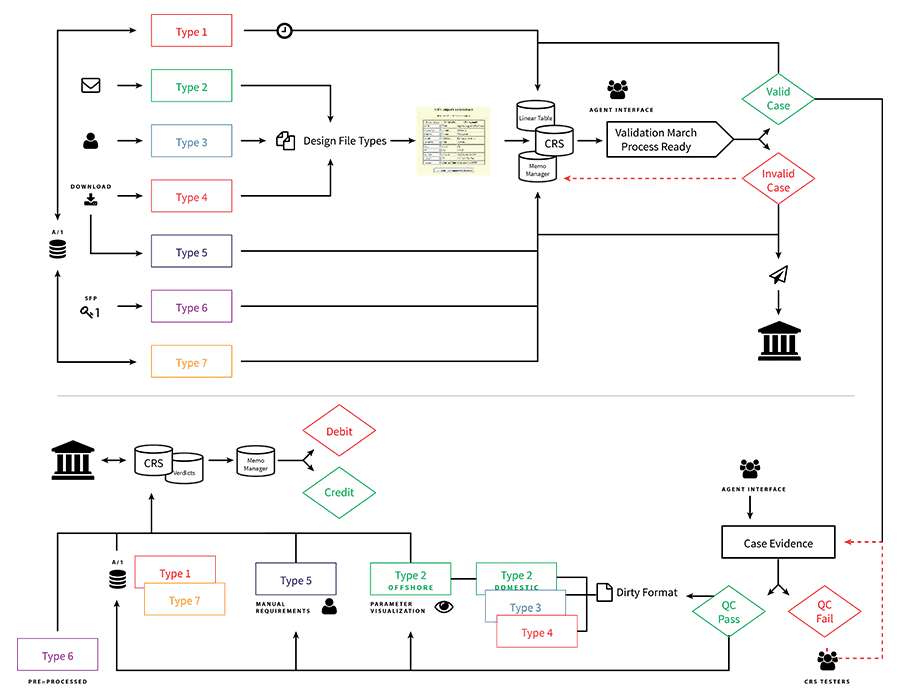
Why were users leaving?
What elements of the interface were confusing or unclear?
Were there any patterns that seemed too complex for the already complex process of payments?
Workflows for managing accounts 📁
We explored use cases and ideas from four different workflows to help challenge our assumptions, as well as push and pull different ideas for features. We looked at workflows that are conversation-focused, goal-focused, outcome-focused, and timebox-focused.
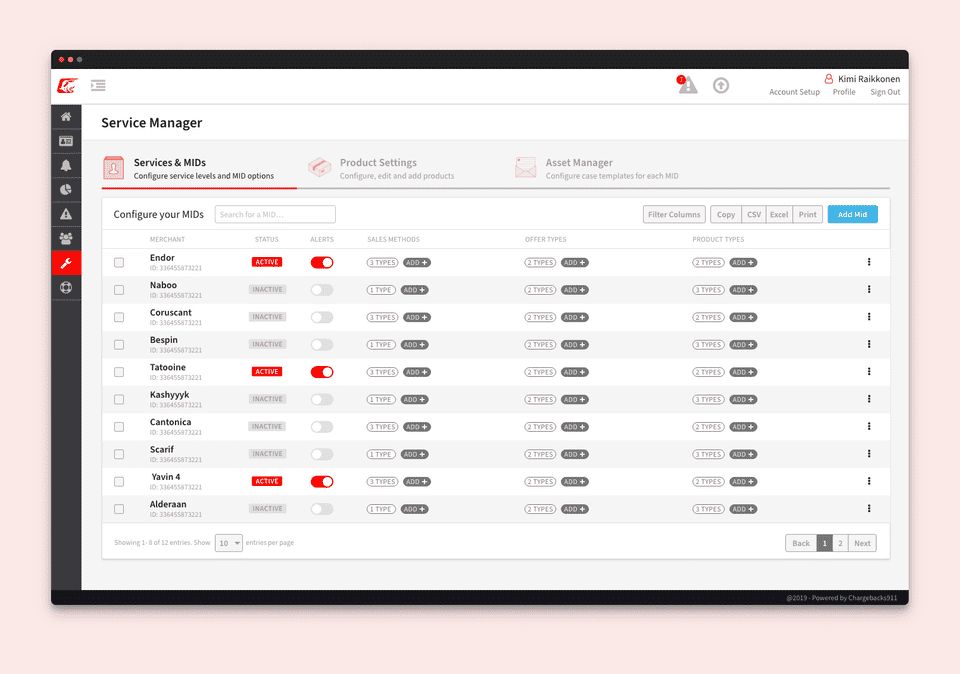
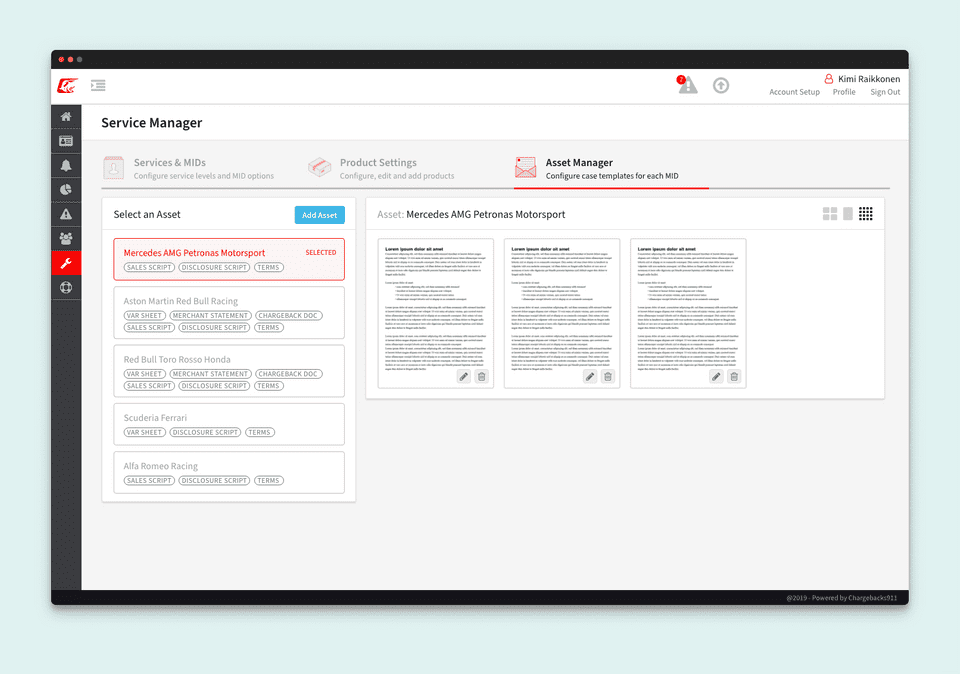
User Feedback 💬
"We needed an expert who could help stem the tide of chargeback losses while at the same reducing overhead. We absolutely love Chargeback911's user-friendly portal and extensive reporting capabilities.
Plus the amount of data we have access to is phenomenal."
Thanks for reading!
If you'd like to see more work, head back to view all work or check out one of my selected projects:
Back to Work